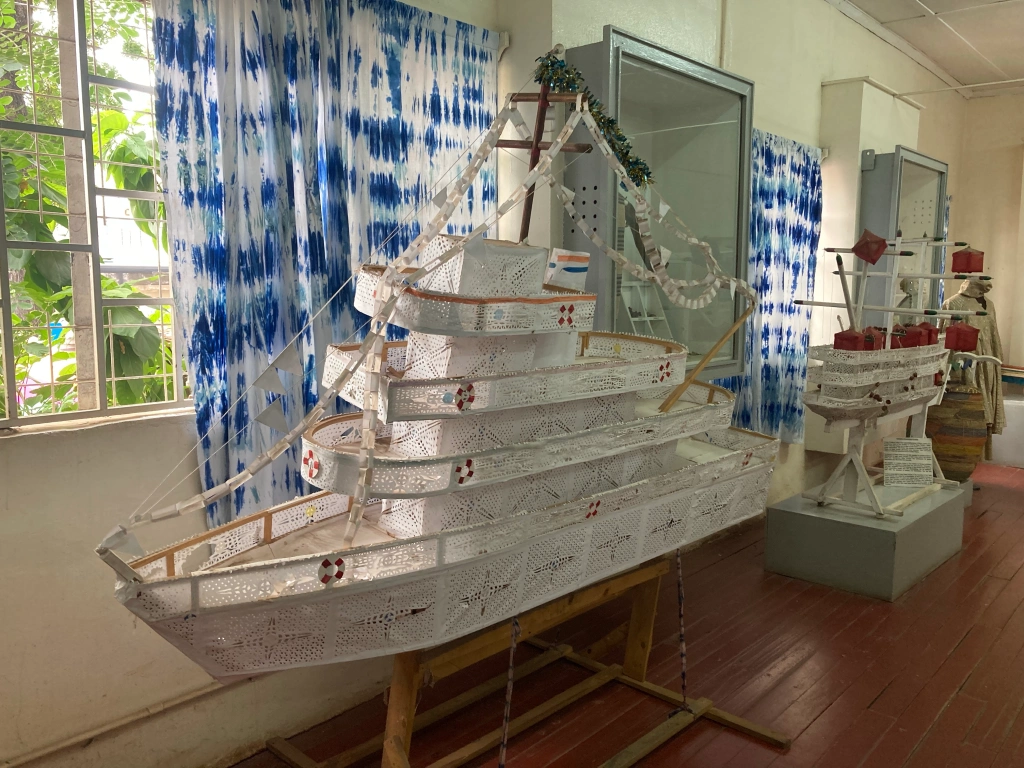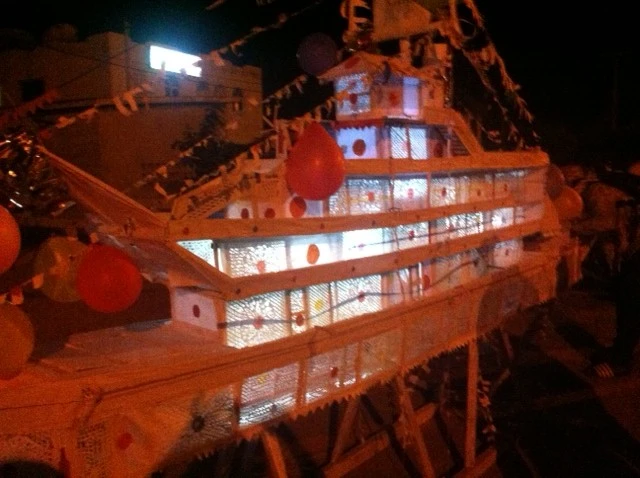Like any other part of the world, the Gambia also celebrates Christmas with great enthusiasm and joy. However, one of the standout features of the Gambian Christmas is the enchanting glow of ‘fanal’ lanterns that adorn homes and streets. The word ‘Fanal’ comes from the Portuguese word for lantern, and these traditional lanterns are an essential part of Gambian culture. These lanterns hold a special significance in Gambian Christmas celebrations, adding a touch of magic and warmth to the holiday festivities.
Gambia’s ‘Fanal’ lanterns hold significant traditional, cultural, and historical importance. These lanterns are a prominent feature of the Christmas celebrations in Gambia, particularly in the Kombos and Greater Banjul areas. The Fanal parade, also known as the Lantern Festival of Senegambia, features elaborate boat constructs made of bamboo with white paper hung over them, illuminated by candles.

History of Fanal Lanterns
The tradition of using ‘fanal’ lanterns during Christmas in The Gambia has deep historical roots. It dates back to the 18th century when the Signares, wealthy women of mixed African and European descent, would showcase their status by attending midnight mass accompanied by lanterns. These lanterns were scaled-down models of their townhouses, beautifully illuminated by candles. Read Also: Why Some African Countries Celebrate Christmas on January 7
This tradition, introduced by Portuguese colonizers, has evolved into a cherished Gambian custom, symbolizing the cultural diversity that has shaped the country over the years. The Fanal parade, a cultural hallmark of Christmas, is celebrated by both Christians and nominal Muslims in Gambia. It is a time when people come together to admire the spectacular lanterns and celebrate the joyous spirit of the holiday season.
Traditional Significance
The Fanal lanterns are important to the Gambians as they connect to the history of Portuguese explorers who lived there. People have celebrated the Fanal parade since the 18th century in St. Louis and Gambia. This makes it a long-lasting part of the region’s cultural heritage.
The lantern festival, called Fanal in Saint-Louis, has roots in history. It has been a part of the city’s culture for a long time, going back to the time of the slave trade and the wealth of the Signares. The Signares were wealthy women who owned slaves and became rich. The Fanal parade also shows the cultural and historical connections between the patrons and the craftspeople, as seen in the lanterns paraded during the festival.
Symbolism of Light
The Fanal lanterns are not only visually stunning but also hold a deeper symbolic meaning. The light emanating from the lanterns represents hope, positivity, unity, and the triumph of good over evil. It also serves as a reminder of the power and resilience of communities in coming together to celebrate their shared traditions. Read Also: Significance of the seven candles in Kwanzaa celebrations
Moreover, using candles in these lanterns is seen as a nod to the religious aspect of Christmas, with Christians celebrating the birth of Jesus Christ and Muslims commemorating the birth of Prophet Muhammad. The Fanal parade thus serves as an example of cultural diversity and harmony in Gambia, where people from different faiths come together to celebrate a shared tradition.
Community Bonding
One remarkable aspect of the ‘fanal’ lantern tradition is its role in fostering community bonding. Families and neighbors unite to create and display these lanterns, making the process a shared experience. Children eagerly participate in crafting their own lanterns, adding a sense of excitement and unity to the community. As the lanterns light up the streets, they serve as a visual reminder of the collective joy and togetherness that Christmas brings.

Artistic Expression
Beyond their symbolic value, ‘fanal’ lanterns also serve as a canvas for artistic expression. Crafted in various shapes and sizes, these lanterns showcase the creativity and imagination of the Gambian people. From simple designs to intricate patterns, each ‘fanal’ lantern tells a unique story, reflecting the diversity of the community and celebrating individual artistic flair.
Economic Impact
The production and sale of ‘fanal’ lanterns also contribute to the local economy. As the demand for these lanterns increases during Christmas, local artisans and businesses benefit from the festive market. This economic boost creates a positive cycle, supporting livelihoods and reinforcing the sense of community prosperity.
Bottom Line
In Gambia, the ‘fanal’ lanterns have become an integral part of Christmas celebrations, embodying the spirit of the season and fostering a sense of unity. As these lanterns illuminate the streets, they bring communities together, spread joy, and contribute to the economic vibrancy of the region. The tradition of ‘fanal’ lanterns not only lights up the night but also symbolizes the enduring warmth and togetherness that make Gambian Christmas celebrations truly special.



